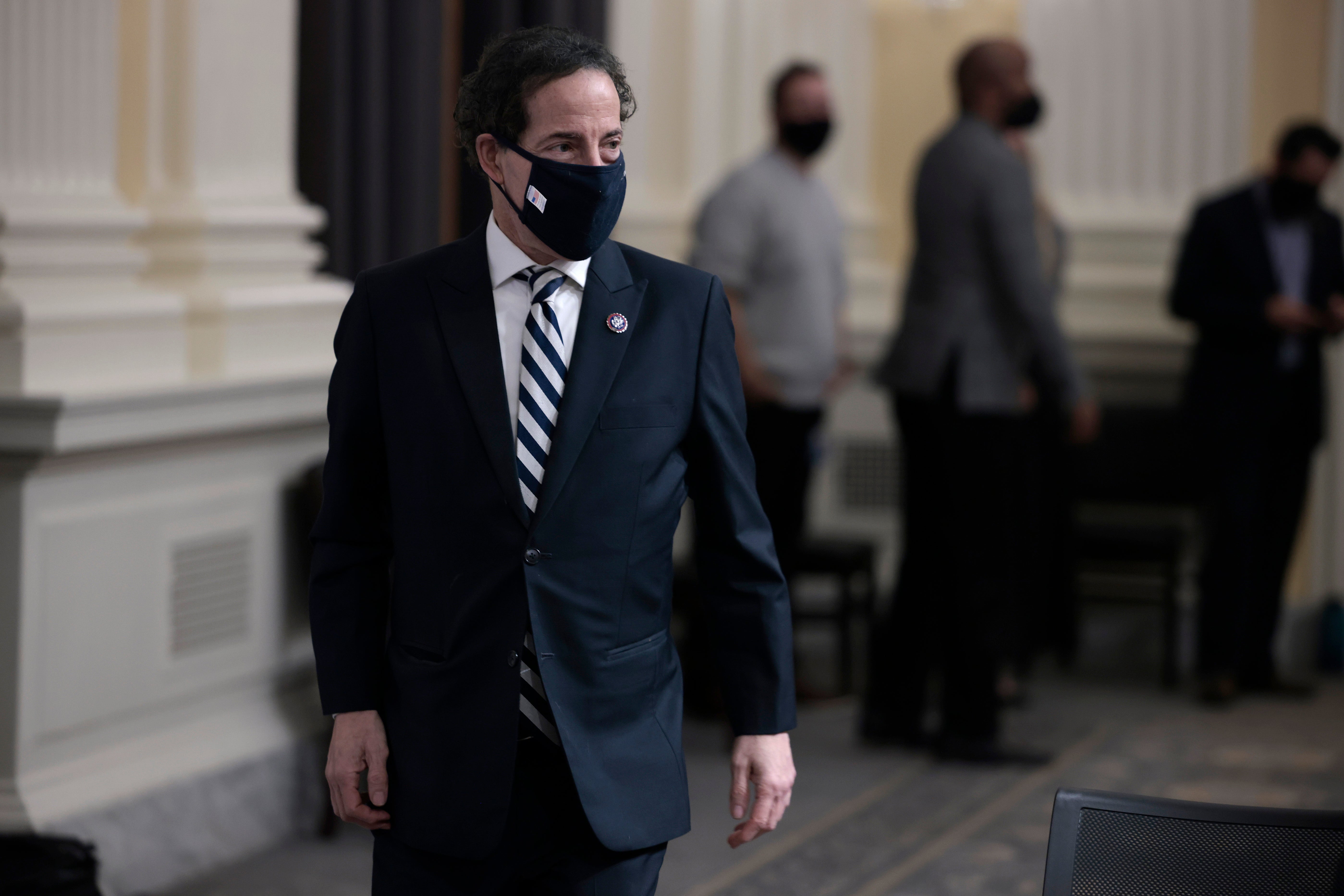Democrats planned secret ‘contingency election’ because they predicted Trump would try to steal 2020, new book reveals
Rep Jamie Raskin and House Democratic leadership began planning as early as May 2020 for Trump to plan to steal the election, Eric Garcia reports


Your support helps us to tell the story
From reproductive rights to climate change to Big Tech, The Independent is on the ground when the story is developing. Whether it's investigating the financials of Elon Musk's pro-Trump PAC or producing our latest documentary, 'The A Word', which shines a light on the American women fighting for reproductive rights, we know how important it is to parse out the facts from the messaging.
At such a critical moment in US history, we need reporters on the ground. Your donation allows us to keep sending journalists to speak to both sides of the story.
The Independent is trusted by Americans across the entire political spectrum. And unlike many other quality news outlets, we choose not to lock Americans out of our reporting and analysis with paywalls. We believe quality journalism should be available to everyone, paid for by those who can afford it.
Your support makes all the difference.House Democrats began planning for Donald Trump to attempt to steal the election as early as May 2020, and set up an organisation to elect as many Democrats as possible to stave off such a scenario, a new book by Maryland Rep Jamie Raskin reveals.
Mr Raskin, a Democrat who was the lead impeachment manager during the 2021 impeachment of the former president after he incited the Capitol riot on 6 January, writes about this in his new book Unthinkable: Trauma, Truth, and Trials of American Democracy, published on 4 January.
An advance copy of the book, which chronicles the insurrection and the impending impeachment, as well as his son Thomas Raskin’s suicide days before the riot and the grief that followed, was obtained by The Independent. Specifically, Mr Raskin writes that Democrats had begun preparing for a supposed “contingent election” as early as May 2020 because of the fact Mr Trump was already crowing about the election being stolen from him.
“Trump was going to steal the election and nothing was going to stop him – not the Electoral College vote, not the popular vote, not the law or the courts,” Mr Raskin writes. “With that increasingly obviously plan in mind, we began to sketch out different scenarios for how Trump would work to bring about a constitutional crisis that would allow him to prolong his increasingly injuriand authoritarian stay in the White House.”
Mr Raskin writes that then-candidate Joe Biden’s lawyers knew Mr Trump would work to nullify their winning vote totals and urge Republican leaders to discard popular election results but they could not handle 6 January 2021 when Congress would meet in a joint session to count electoral votes sent by states.
The Maryland congressman, who before being elected in 2016 was a constitutional law professor at American University, writes that he suspected that Mr Trump would try to coerce state election officials to overturn the results because of fraud but if that didn’t work, convince the legislatures to cancel out and disregard popular election results and then use their powers to install Trump electors. But if those two scenarios failed, then Mr Raskin suspected that Mr Trump would try to have Vice President Mike Pence declare newly manufactured powers under the 12th Amendment of the US Constitution to reject electors cast by swing states that broke for Mr Biden and “return” them for further consideration and trigger a contingent election in the House.
Mr Raskin’s doomsday scenario largely mirrors the scenario that Trump attorney John Eastman plotted in the “Eastman memo” that Washington Post reporters Bob Woodward and Robert Costa reported in their book Peril. Mr Eastman planned for Mr Pence to to interrupt Electoral College votes by announcing that Arizona, which had voted for Mr Biden, sent “multiple slates of electors” and would “defer decision on that until finishing the other states”, with other states Mr Biden won being pushed aside. Mr Pence would have then announced that “because of the ongoing disputes in the seven states, there are no electors that can be deemed validly appointed in those states,” reducing the number of electors to 454, which would have allowed Mr Pence to gavel in Mr Trump as the winner of the presidential election.
“When I first unveiled this analysis to my colleagues, they asked how I knew all this,” Mr Raskin wrote. “The answer was simple: I asked myself what I would do to try and steal the election if I were the lawless and incorrigible Donald Trump.”
According to the book, House Speaker Nancy Pelosi warned that Democrats would need to win majorities in as many state delegations as possible. The reason for this was because the 12th Amendment for the US Constitution states that if there is no majority winner of the Electoral College, the House “shall choose immediately, by ballot, the president. But in choosing the President, the vote shall be taken by states, the representation of from each state having one vote.”
At the time, Republicans had a majority in 26 state delegations compared to 22 states where Democrats had a majority in a state delegation.
But Mr Raskin noted that he expected Republican Rep Liz Cheney, the at-large Rep for Wyoming, to cast a vote for Mr Biden despite not voting for him.
“The first way to preempt the contingent election gambit and drain it of any meaning was by working in the 2020 U.S. House elections to flip over to the Democratic column (or the “tie” column) at least two of the state delegations in the House that were then controlled in the 116th Congress by the GOP,” Mr Raskin wrote. “If we could strip away just one of the delegations, Trump would have only twenty-five votes, short of the constitutional majority necessary to choose a new president. And if we could meet the far more challenging goal of taking majorities in four new state delegations, it would be Biden, not Trump, who would prevail in any contingent election, completely neutralizing this GOP strategy.”
Constitutionally, if neither candidate wins a majority in the Electoral College or a contingent House election, Mr Raskin wrote that would mean Ms Pelosi would become president since she was second in line for succession.
In turn, Mr Raskin also set up a Joint Fundraising Agreement, which allow candidates with a common cause to solicit campaign contributions and evenly distribute the money to each of them, called the Twelfth Amendment Defenders Fund. Federal Election Commission filings showed that in the 2020 election cycle, it raised a little less than $498,000 and spent about $493,000. The Independent also confirmed all of the recipients Mr Raskin listed against those in FEC filings.
But the venture would turn out to be a bust, when Democrats not only lost seats, but in Iowa, Republicans gained the majority in the state congressional delegation after Democratic Rep Abby Finkenauer lost to Republican Ashley Hinson and Democratic candidate Rita Hart lost to Mariannette Miller-Meeks by six votes.
Similarly, Mr Pence opted not to follow through with the plan hatched by Mr Eastman, which led to pro-Trump rioters who raided the Capitol yelling “hang Mike Pence” on 6 January.




Join our commenting forum
Join thought-provoking conversations, follow other Independent readers and see their replies
Comments